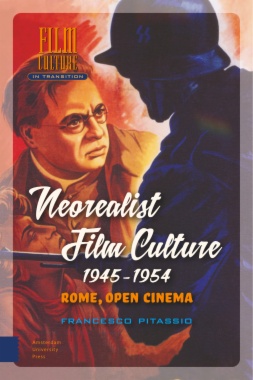Unique, truthful, brutal... Neorealism is often associated with adjectives stressing its peculiarities in representing the real, its lack of antecedents, and its legacy in terms of film style. While this is useful when confronting auteurs such as De Sica, Rossellini or Visconti, it becomes problematic when examining a widespread cultural practice that realistic modes deeply affected. This cultural production included filmmaking, literature, visual culture and photography, as well as media discourses. It was internally contradictory but fruitful inasmuch as its legacy influenced national culture for many decades to come. The volume spotlights post-war Italian film culture by locating a series of crossroads, i.e. topics barely examined when discussing neorealism: nation, memory and trauma, visual culture, stardom, and performance. The aim is to deconstruct neorealism as a monument and to open up its cultural history.
- Cover
- Table of Contents
- Acknowledgements
- Introduction
- An Uncertain Direction. Neorealist Cinema and Transitional Culture
- 1. Locating the Real
- National, International, and Transnational Neorealism
- An Address to the Audience
- The Real Thing
- Wasteland. Neorealism and National Identity
- A New Land? National Territory and Ethnos
- Controversial Screens: Neorealism, People, Media
- Teaching in the Middle of Ruins. International Neorealism
- Strangers on the Prowl. Transnational Neorealism
- Culture and Cultures. Reconsidering Neorealism as a National Cinema
- 2. Lies of Memory
- Post-war Culture, Remembrance, and Documentary Film-making
- Displaced Memories
- Memory Frames. Michelangelo Antonioni’s Early Documentaries
- Recurring Interruptions. Post-War Documentary, War Memories, and Trauma
- Inspecting the Frames
- 3. Looking at the Images
- Neorealist Visual Culture
- Neorealism as a Scopic Regime
- The Bill Sticker and the Posters. Film Ads and Visual Culture
- The Earth Trembles at the Grand Hotel: Neorealist Photo-Romances
- Still Lives. Neorealist Photo-Documentaries
- On the Films’ Margins
- 4. Actors, Non-professional Actors, Starlets, and Stars
- Film Performance in the Neorealist era
- A Stroll by the Sea
- Life Begins Anew. Non-Professional Performers and Neorealist Culture
- We, the Humans Beings. Non-Professional Performers and Neorealist Representation
- Ladies Without Camelias. Post-War Feminine Stardom
- The Show Must Go On. Professional Performers and Neorealist Cinema
- Cries, Laughs, and Songs. Anna Magnani in Transition
- The Body of the Multitude
- Bibliography
- About the Author
- Name Index
- Film Index

